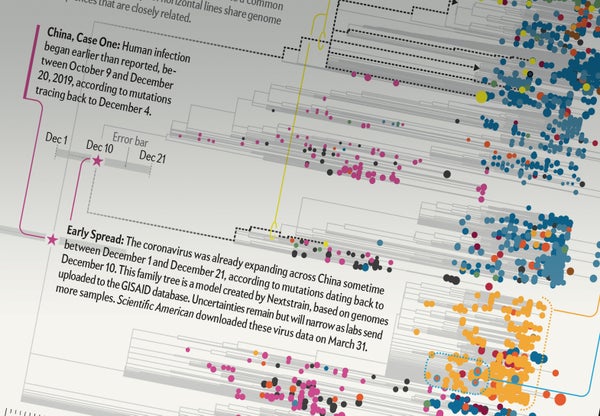On supporting science journalism
If you're enjoying this article, consider supporting our award-winning journalism by subscribing. By purchasing a subscription you are helping to ensure the future of impactful stories about the discoveries and ideas shaping our world today.
The world struggled to understand how COVID-19 spread during the pandemic’s first four months, but genetic sequences of the coronavirus reported by laboratories tell the real story—when the virus arrived in each place and where it came from. The sequences, which advance from left to right in the graphic, show that the virus jumped from an animal to humans in China, humans transmitted it to one another within China, then people traveling from there spread it globally person to person. The virus had not mutated significantly as of March 31, 2020; human contact created the pandemic, not a wildly evolving pathogen. Mapping the spread also substantiates actions that could have best mitigated it: faster, wider testing in China; earlier, stricter global travel bans and isolation of infected people; and more immediate social distancing worldwide.

Credit: Martin Krzywinski; Source: Nextstrain (enabled by data from GISAID) HTTPS://NEXTSTRAIN.ORG/NCOV
Read more about the coronavirus outbreak from Scientific American here, and read coverage from our international network of magazines here.
